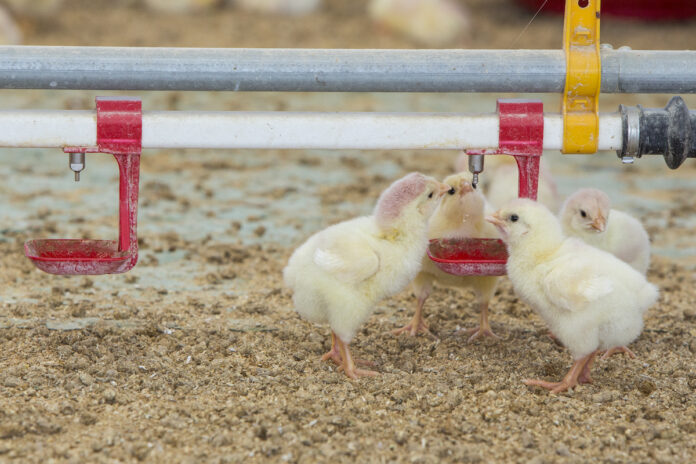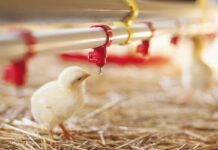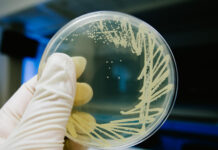
Water is the single greatest input into the production of poultry products such as eggs and meat. The fact water is a relatively inexpensive input as compared to feed, and it is difficult to conduct experiments which evaluate water parameters on poultry performance, has resulted in little research done in this area in the past thirty years. With the changing dynamics of production as well as the advancement in genetics, there exists the need for sound water quality guidelines which help production personnel evaluate water systems and interpret findings in a manner which support optimal production.
S.E. Watkins – Distinguished Professor Emeritus, Center of Excellence for Poultry Science University of Arkansas’ Systems Division of Agriculture
Introduction
As the single greatest nutrient input into the production of eggs and meat, water quality and quantity deserve careful attention to assure optimal flock performance. Twenty-five years of assisting the poultry industry worldwide with identifying and correcting drinking water challenges provides the foundation of experience and expertise which will be shared in this paper.
Birds are fairly tolerant of most contaminants in drinking water. While standards exist for maximum acceptable levels for the most common naturally occurring water contaminants such as iron (0.3 mg/L also ppm) and calcium (80 mg/L), these standards are mainly derived from standards used for human drinking water supplies. These are based more on aesthetic values and not on careful research evaluations to determine what levels have a negative correlation to performance parameters such as weight gain, feed conversion, livability, fertility and egg production. Therefore, most standard guidelines should be considered just that, guidelines and not representation of what birds can tolerate. The exceptions to this observation are levels of sodium and chloride as well as magnesium and sulfate combinations. Levels of sodium and chloride above 200 mg/L without adjustments to dietary salt levels can increase the incidence of loose droppings and levels exceeding 400 ppm/L will depress weight gains and feed conversions. Similar issues of loose droppings have been observed with magnesium levels above 60-80 mg/L combined with sulphate levels greater than 250 mg/L. Birds are tolerant of calcium levels as high as 150-180 mg/L but this scale-producing mineral along with magnesium, iron and manganese can impact equipment function and diminish distribution pipe size if corrective actions such as a water softener or acidification to a pH below 6 are not implemented. Birds are also very tolerant of the presence of iron and manganese in the water but are less tolerant of the pathogens such as pseudomonas, E. coli and salmonella which require iron, and in some cases manganese, for building cell walls. Therefore, the presence of these two minerals in water supplies should be considered a red flag for the risk of harmful microbes and appropriate sanitation and filtration steps taken.
Water supplies are dynamic and subject to the risk of changing. Factors such as floods, droughts, water usage level, as well as practices such as mining or crop farming, can influence quality with surface supplies being the most vulnerable. Poultry drinking water systems are also vulnerable to change, particularly microbial, even when the source also provides drinking water for residences. Poultry production buildings use water differently than residential sources. In poultry barns, water is slow moving, creating a perfect environment for microbes such as Bordetella and water can sit dormant throughout the night or between flocks. Both situations can compromise microbial quality even when sanitisers such as chlorine are used.
Companies with the most successful water programs are proactive in developing and implementing a diligent water inspection process that can help identify and correct challenges early. Also critical for successful water programs are effective and thorough system cleaning between flocks or when the barns are empty and use of water sanitizers which complement the water. The final steps to a successful program are consistent monitoring and verification of effectiveness through microbial testing provide the sanitation schedule for on-farm water systems. This paper presents a series of checklists to assist the user.
Water system inspection
a) Source
- Identify source-well, municipal, surface, other.
- Examine well or surface water design.
- Determine if any unusual conditions have occurred such as flooding or droughts. Does the area have activities like row-crop farming, mining or fracking?
- Check for well-head damage and determine if any maintenance has been done on the system such as pump replacement that could result in contamination.
- Measure gallons per minute (gpm) at source. Rainwave flow meter can be attached to hydrants, but verify the water faucet used for the test does not restrict flow or the water hose draining from Rainwave during test.
- What water treatments are used at the source- and in what order?
- Are there injectors and how are they plumbed in? What is their gpm rating?
- Collect sterile water sample as close to source as possible for total bacteria, coliforms and mineral and pH analysis (need one cup of water) – store on cool pack until submitted to laboratory.
- Visually examine water, smell and taste it.
b) Storage
- Size/holding capacity/volume, material, color, location, cleanliness.
- How does water flow into and out of storage?
- Does water leave storage directly from bottom or output elevated off bottom?
- How long does water remain in storage? What is dwell time in storage between flocks and during flock?
- How often is storage cleaned and can it be completely cleaned including bottom? If cleaned, how and with what?
- Is water supply treated prior to or after storage?
- What products or treatments are used before and after storage?
- If concerns about water quality changing during storage, collect sterile water sample and post storage for total bacteria and mineral and pH evaluation.
c) Distribution
- Verify pipe size(s) and type of plumbing material (pvc, metal) and age of lines from source to birds. Has there been any work done on distribution lines?
- Determine if underground water lines can be cleaned from source to barns.
- Have lines been cleaned and with what?
d) Barns-entry way/Ante room
- Is there daily water usage information for flocks? Are there usage records throughout the day?
- Check pressure reducer-maintenance schedule, has screen been checked for sediment build-up, are there pressure gauges pre and post pressure reducer?
- Inspect filters –are they clean, how often are they changed? Do they clog frequently? (If so, submit filter covered in clogging material to Watkins Water Lab for mineral/microbial analysis where appropriate).
- What is gpm flow at barn entrance.
- Inspect injectors – what is gpm rating.
- Inspect connectors to medicators when not hard plumbed; do connector hoses create flow restrictions? Have injectors been repaired? Has injection accuracy been verified? How many injectors? What are they used for? Are they cleaned between uses? What is container used to hold injected products? Is it sealed, used for anything else?
- What products are added? If sanitation products/acidification are used, is there time for products to mix into water prior to additional injections? How often are products added?
- Is there any verification of sanitiser residual in water?
e) Drinker system
- Verify system type.
- Verify age and length of each water line and drinker spacing and # per line.
- Determine #birds/drinker – during brooding and grow-out.
- Inspect hoses and connectors, with particular attention to drop hoses into water lines.
- Regulators – age, maintenance, chemicals used (cleaners, sanitizers, acids)
- Have water lines been cut open? If so, what was observed on inside of line?
- Do lines experience sediment buildup? Do drinkers leak due to sediment build-up?
- Has system been cleaned? When and with what?
- Are water lines flushed during flock? How often?
- Inspect water line drain hoses, do they allow water flow to move freely or are there restriction points?
- Inspect standpipes.
- Is there any documentation of water sanitation product residual in drinker lines in front and back of barn.
- Are all water lines used during brooding? If not, how are off-brood end lines managed during the brooding period?
- Are there shocker lines over drinker lines? Are they working? How are they grounded?
- Visually examine water from water line, smell and taste it.
- Collect sterile drip water samples from water line but do so in a way that prevents contamination of sample from fans and moving air.
- Collect swab samples from end of water lines and when possible, from inside regulator, also prevent contamination from air from fans, etc.
f) Cool cells and foggers
- Are any products used?
- Inspect system and if challenges with cool cells – turning to mush or mineral build-up clogging air flow, take sample of water from cool cell recirculation tank for mineral and pH analysis.
- How often are fogger lines used?
- Are they cleaned during non-use or prior to warm weather?
g) Water analysis
Standard Analysis: Analyse source samples for minerals and pH, total bacteria and coliforms. Test drip and swab samples from water lines for total bacteria. Carefully collect samples to prevent contamination from hands, air or outside of water line. If using a different lab from ones listed below, confirm lab will analyze for: calcium, magnesium, iron, manganese, sulphur (sulphates), chloride, sodium, pH.
Additional tests should be requested if the following symptoms or concerns are present:
- Clear to white filmy, stringy slime – Request fungus, yeast and mold and general microbial profile from UA Diagnostic Laboratory. Collect the slime in as sterile as possible manner with swab.
- Pinkish, reddish, brown slime in storage, water filters or lines – Request pseudomonas from UA Diagnostic Lab.
- Concerns that treatments are not working properly, i.e. filtration, Reverse Osmosis, magnets – submit a sample collected post treatment for mineral and pH analysis.
- Health challenges such as respiratory, leg lameness or necrotic enteritis, loose droppings or feed passage above normal levels – Collect drip samples from near end of water lines and swab samples from regulators and end of water lines-request total microbial profile including staph from UA Diagnostic Lab as well as total bacteria, yeast and mold from Watkins Lab.
- Use of water products such as therapeutics or organic/inorganic acids- Request bacteria, yeast and mold from Watkins Water Lab.
Collect samples in as sterile as possible manner for microbial analysis and store in a cooler with ice packs till submitted to lab. For best results, submit sample within 24 hours of collection but up to 4 days is acceptable as long as samples are kept cold but not frozen.
Conclusion
Water plays a major role in the health, well-being and productivity of poultry flocks. Because in the past, it has tended to be a relatively cheap resource compared to feed, there has been little research done to better understand the role its quality plays on performance or just how vulnerable water quality is to the evolving dynamics of poultry drinking systems. However, in the era of antibiotic free production, all factors of production must receive careful scrutiny, including water systems to assure that overlooked issues or practices do not contribute to a loss of control of quality. By acknowledging and accepting water sources, supplies and systems for poultry operations can be vulnerable to contamination, particularly microbial pathogens, production personnel may be more motivated to develop water programs that take a pro-active stance in assuring optimal water quality is maintained from source to the last drinker. This paper provides a foundation for creating a proactive water inspection program which could be beneficial for assuring water is maintained at the quality necessary for keeping flocks performing at their best.
From the Proceedings of the Australian Poultry Science Symposium 2022

















